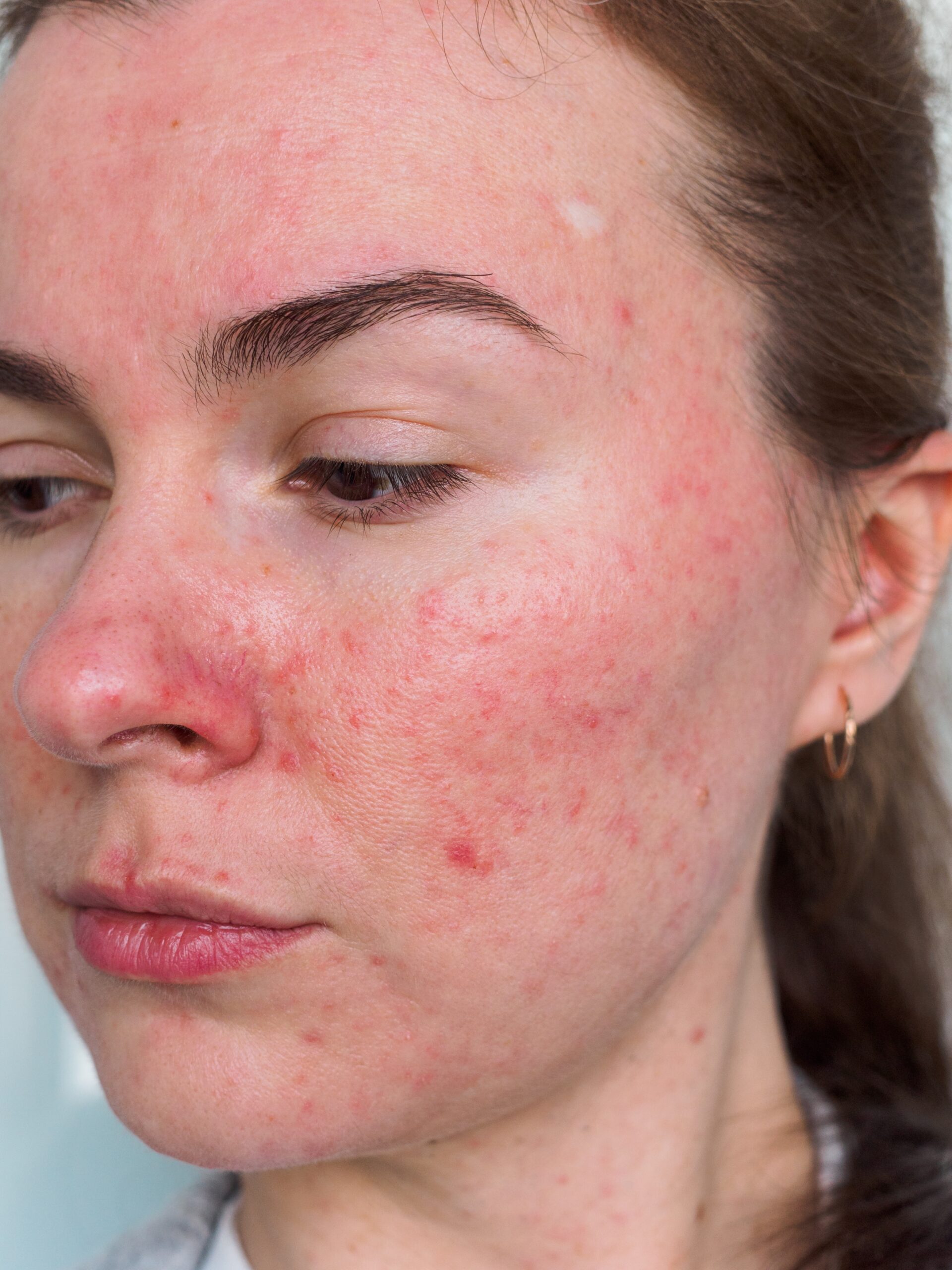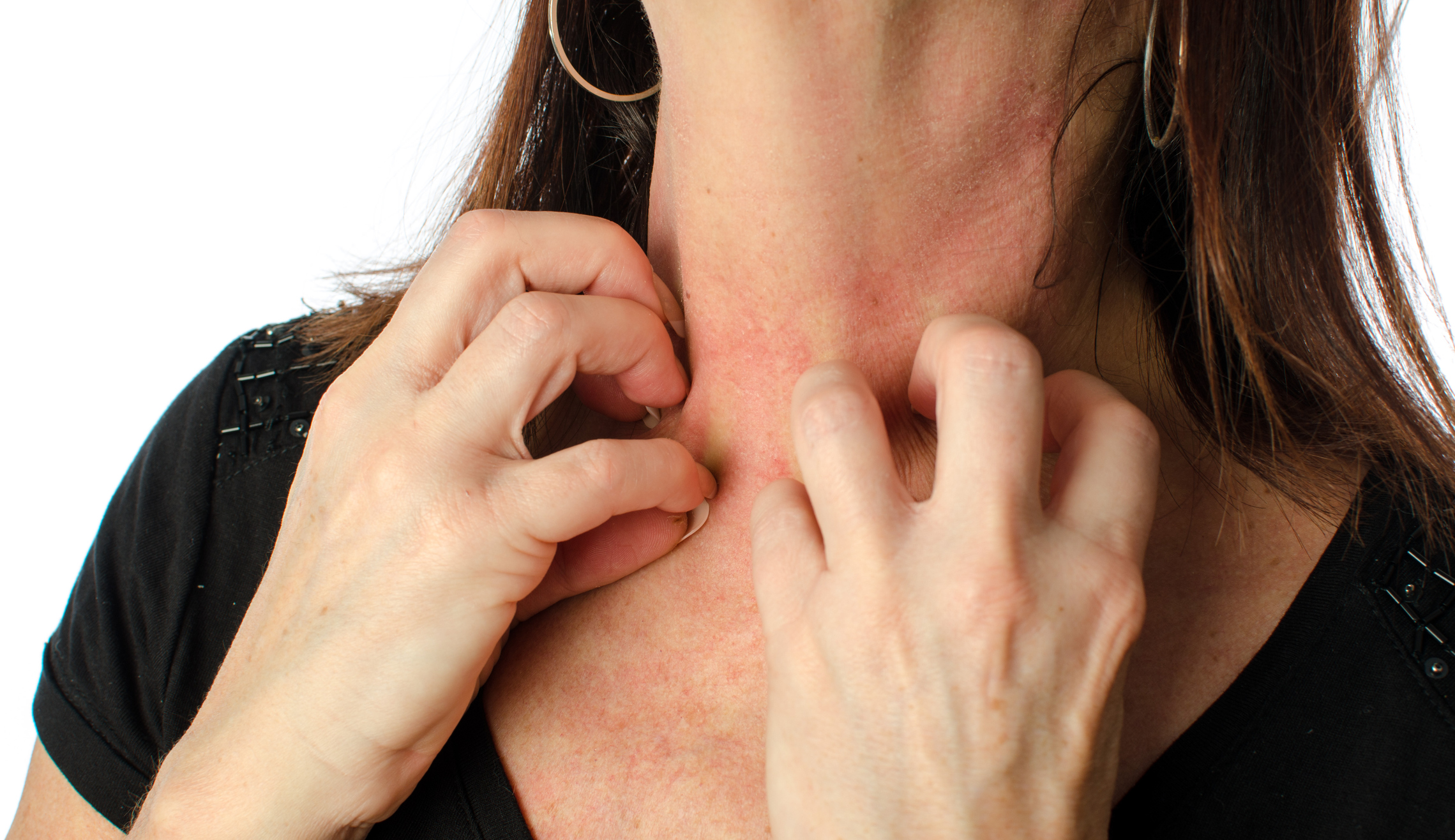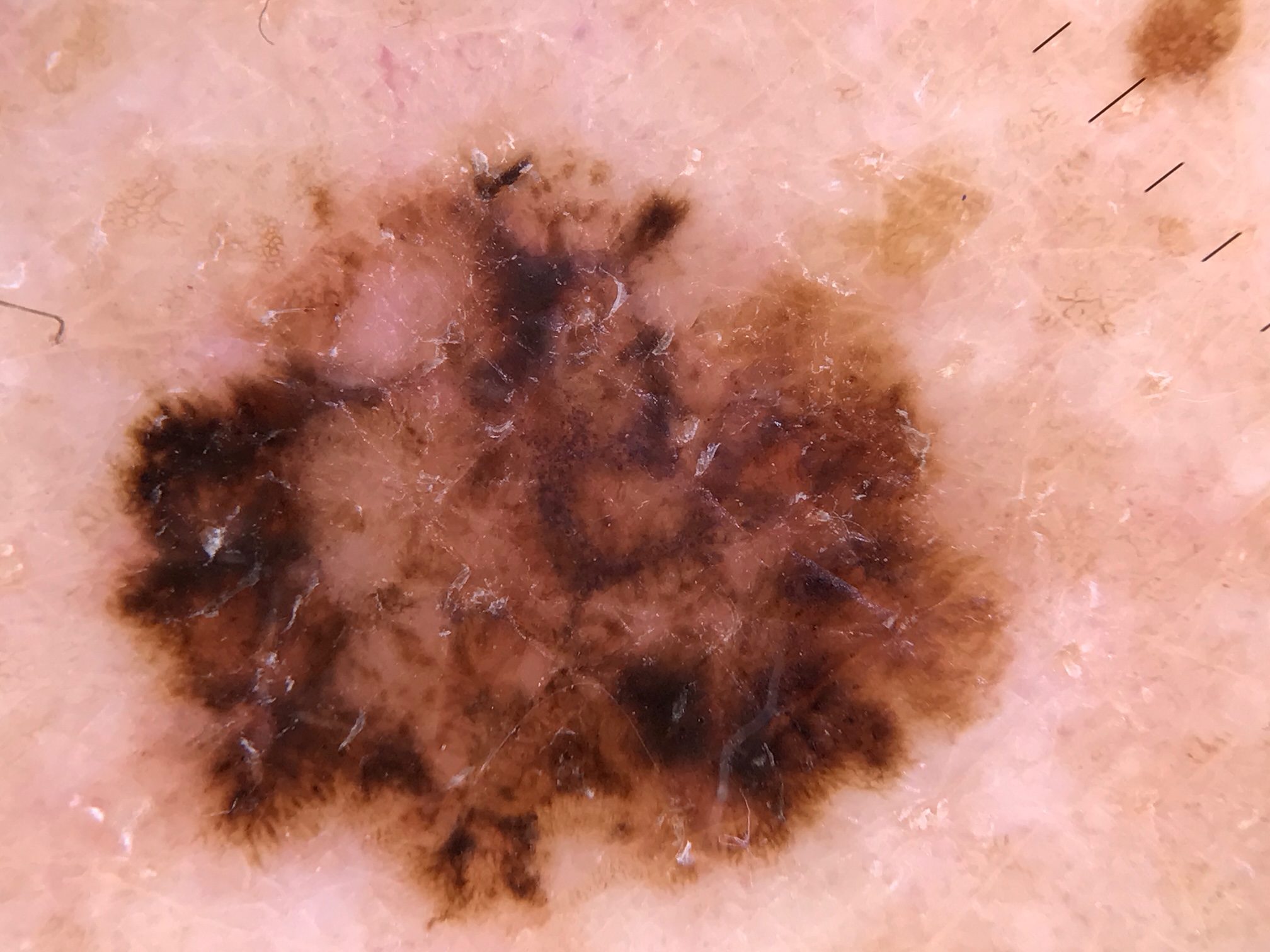Steroid Rosacea
Steroid rosacea is a medical term given to the type of rosacea occurring on the mid-face caused by topical steroids or withdrawal from them. This condition is very common among adult women, but in rare cases, males and children can be affected as well.
Usually, after applying topical steroid for a few weeks, the affected area (e.g. eyelids, cheeks, chin, or mild-forehead) becomes red. Small bumps, also known as papules, and pustules appear. They may be scaly. The reddened areas may feel burning hot and itching. After some time, telangiectasia (enlarged blood vessels) might start developing. Lastly, the affected skin becomes extremely sensitive to anything applied to it.
Steroid rosacea may become extremely severe if an individual withdraws from the regular application of topical steroid cream. This condition is called a rebound flare.
It remains unknown why topical steroids cause steroid rosacea. Some theories include the following causes: formation of new blood vessels and rebound vasodilation, innate immune reaction along with the release of inflammatory cytokine, the proliferation of hair follicle mites, and proliferation of other microorganisms found in the skin.
Steroid rosacea is observed to be the most severe and most likely to occur during the application of strong steroids on the face on a daily basis. Infrequent usage of mild steroids causes much less occurrence of steroid rosacea.
In most cases, steroid rosacea responds quite well to given treatments. Telangiectasia may remain persistent for long term.
The usage of topical steroids should be immediately discontinued. In order to reduce the severe flare-up, it is recommended to do a slow withdrawal from a particular steroid by slowly reducing how often the topical steroid is applied. Moreover, it is recommended to choose another topical steroid that would be less potent.
If moisturisers are used, they should be non-oily. Oral tetracycline (e.g. doxycycline) is often prescribed for several months to cure the condition.
Lastly, telangiectasia can be treated with intense pulsed light treatment. Light pulses are targeted at the red-pigment, known as haemoglobin, in the blood. They heat up and destroy the pigment without affecting other tissues and skin around the rash.
Centre for Medical and Surgical Dermatology offers various treatment options for rosacea which are unique for every patient. For more information on this condition, visit the following link:
Centre for Medical and Surgical Dermatology offers IPL therapy as a treatment option for rosacea. For more information about this treatment option, visit the following link:



